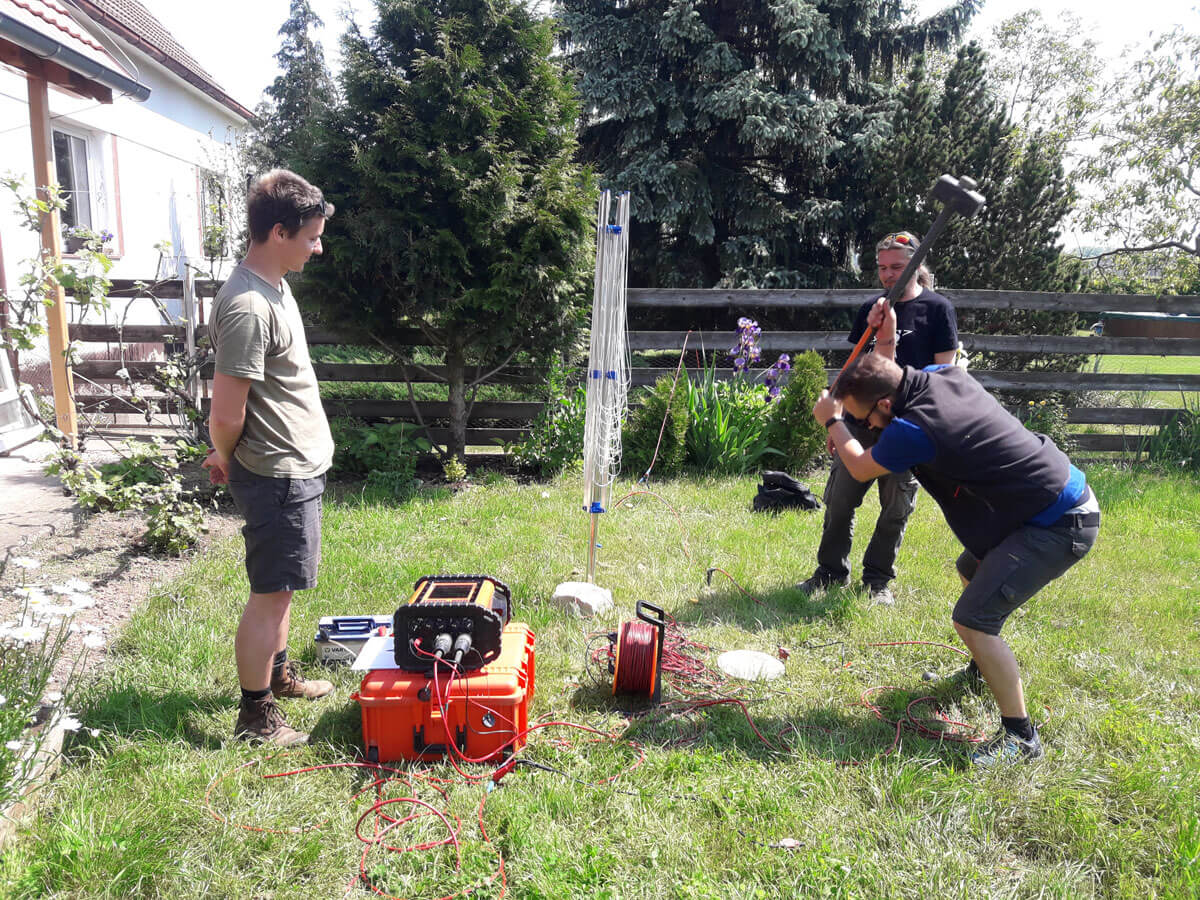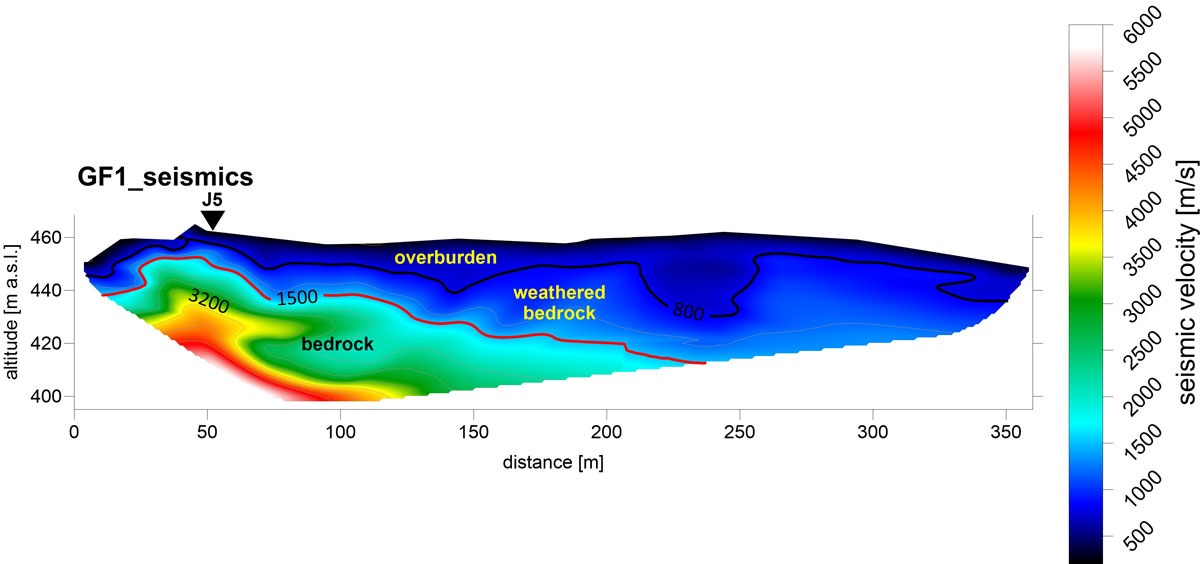Seismics
Seismic methods are based on monitoring seismic wave paths, their propagation velocities and attenuation characteristics. Seismic waves reflect, refract or diffract in the rock environment. The higher the seismic wave propagation velocity is, the harder the environment we can expect. The velocity of seismic wave propagation can be converted to the modulus of elasticity or to derive other physical properties of the rock.
Seismic methods are basically divided into methods of refraction and reflection. The refraction method follows waves that break at an interface where the velocity in the overburden is less than in the bedrock. The reflection method monitors waves that are reflected at velocity interfaces, or even at interfaces that differ only in their bulk density.
Studies on the surface waves
Recently, the study of surface waves has become more frequently used in advanced technical practice, the analysis of which makes it possible to determine the composition of layers and their properties to depths of units as well as hundreds of meters (MASW method).
Seismic hammers, machines with an impact of weights on the ground, or vibrators are most often used as the sources of seismic waves. With the MASW method, passive monitoring of seismic noise and their subsequent analysis is also possible. Passive monitoring of seismic signals is also used to assess the technical seismicity of a given locality (or construction site). For detailed studies of seismicity, the noise level is monitored, which can excite seismoacoustic waves in the rock environment.



